Quick Guide to Russian Prison Tattoos
Nathan Johnson
Published
08/27/2020
in
wow
Tattoos are all the rage these days, but once upon a time tattoos were usually earned. Each one told a story and/or commemorated something significant.
Nowadays plenty of people get tattoos just for fun, but there are still some cultures that have very, very specific meanings assigned to their ink. Russian prison tats, for example, can tell an entire life's story to the well-trained eye.
Nowadays plenty of people get tattoos just for fun, but there are still some cultures that have very, very specific meanings assigned to their ink. Russian prison tats, for example, can tell an entire life's story to the well-trained eye.
- List View
- Player View
- Grid View
Advertisement
-
1.
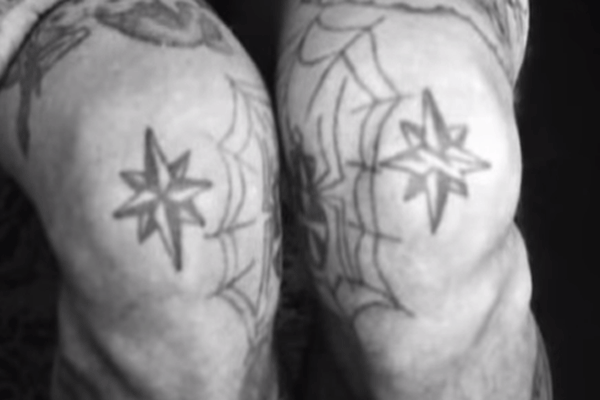 Depending on the location on the body, the stars convey a prisoner’s status. When worn on the knees, the stars are a sign of a prisoner who commands respect. The implied meaning is “I will never get on my knees in front of anyone.”
Depending on the location on the body, the stars convey a prisoner’s status. When worn on the knees, the stars are a sign of a prisoner who commands respect. The implied meaning is “I will never get on my knees in front of anyone.” -
2.
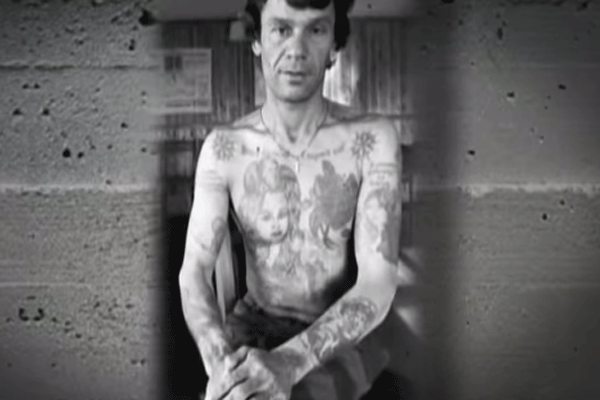 Stars on the chest mark a higher rank. Only the most respected can wear the thieves’ stars in that area of the body. The tattoos must be earned, and an inmate wearing an undeserved tattoo risks a beating or worse.
Stars on the chest mark a higher rank. Only the most respected can wear the thieves’ stars in that area of the body. The tattoos must be earned, and an inmate wearing an undeserved tattoo risks a beating or worse. -
3.
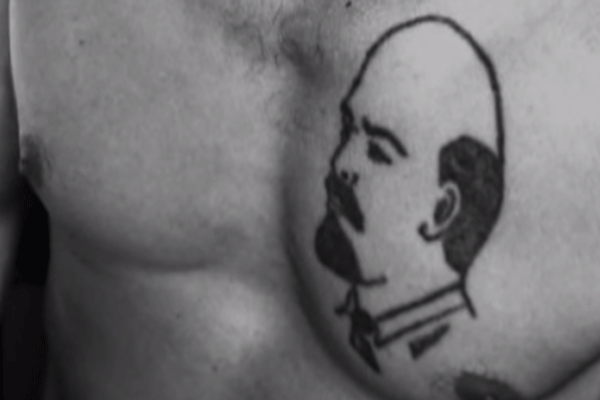 In the 1900s, prisoners believed placing tattooed portraits of Lenin and Stalin on their chests would protect them from a firing squad. The authorities would not shoot at any images of their leaders; instead, they would shoot prisoners in the back of the head.
In the 1900s, prisoners believed placing tattooed portraits of Lenin and Stalin on their chests would protect them from a firing squad. The authorities would not shoot at any images of their leaders; instead, they would shoot prisoners in the back of the head. -
4.
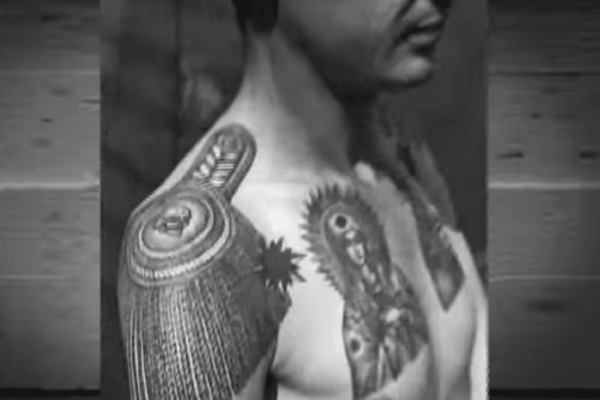 An epaulette, or ornamental shoulder piece typically found on a military uniform, are used to signify rank within the Thieves In Law. Known ranks were captains, lieutenants and colonels.
An epaulette, or ornamental shoulder piece typically found on a military uniform, are used to signify rank within the Thieves In Law. Known ranks were captains, lieutenants and colonels. -
5.
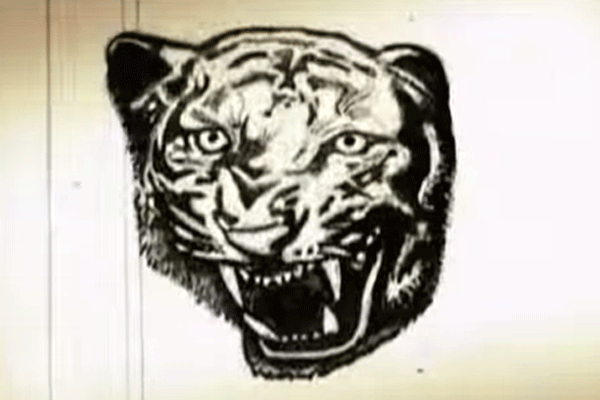 Tigers, leopards or snarling wolves are called Oskals, the Russian word for ‘Big Grin.’ These tattoos indicate aggression or hostility toward the authorities.
Tigers, leopards or snarling wolves are called Oskals, the Russian word for ‘Big Grin.’ These tattoos indicate aggression or hostility toward the authorities. -
6.
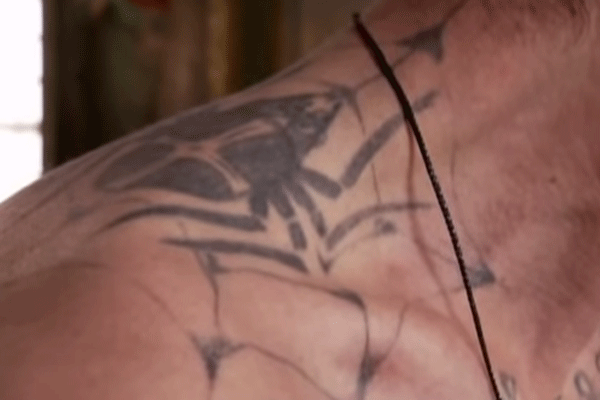 The spider crawling on the right shoulder is indicative of a thief. If the spider is crawling up the shoulder, the thief is still active. If the spider is crawling down, this means the thief is done with the criminal life.
The spider crawling on the right shoulder is indicative of a thief. If the spider is crawling up the shoulder, the thief is still active. If the spider is crawling down, this means the thief is done with the criminal life. -
7.
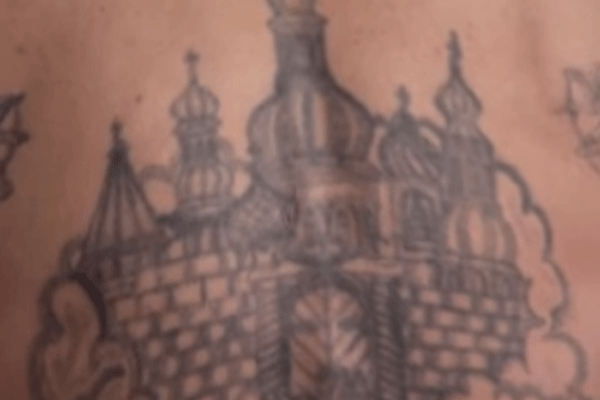 Cathedrals, or Kremlins, represent time spent incarcerated and are iconic Russian prison tattoos. The more domes an inmate’s church has indicates the number of sentences they have served over their lifetime. These tattoos can be found anywhere on the body.
Cathedrals, or Kremlins, represent time spent incarcerated and are iconic Russian prison tattoos. The more domes an inmate’s church has indicates the number of sentences they have served over their lifetime. These tattoos can be found anywhere on the body. -
8.
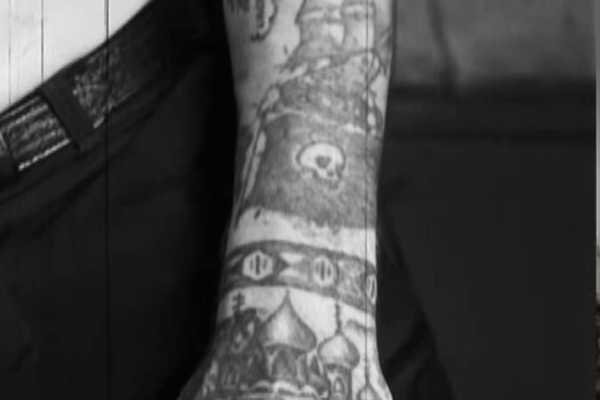 Manacles are another sign of sentencing, and are sometimes paired with cathedrals found on the hands. Manacles mean that the sentence the inmate served was more than five years in length.
Manacles are another sign of sentencing, and are sometimes paired with cathedrals found on the hands. Manacles mean that the sentence the inmate served was more than five years in length. -
9.
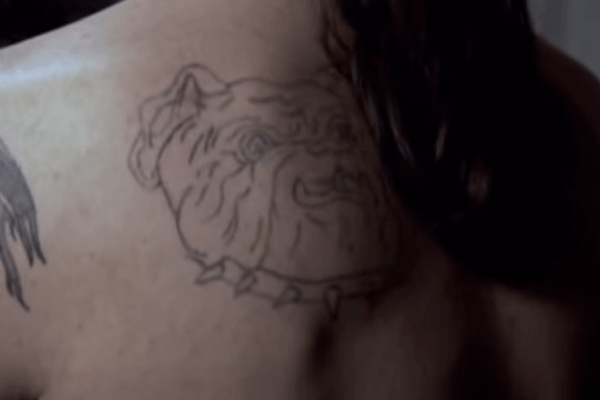 A grudge is generally depicted as a dog bearing its teeth. This implies a grudge with authorities, or a grudge with life in general. It shows disdain for police and other authority figures.
A grudge is generally depicted as a dog bearing its teeth. This implies a grudge with authorities, or a grudge with life in general. It shows disdain for police and other authority figures. -
10.
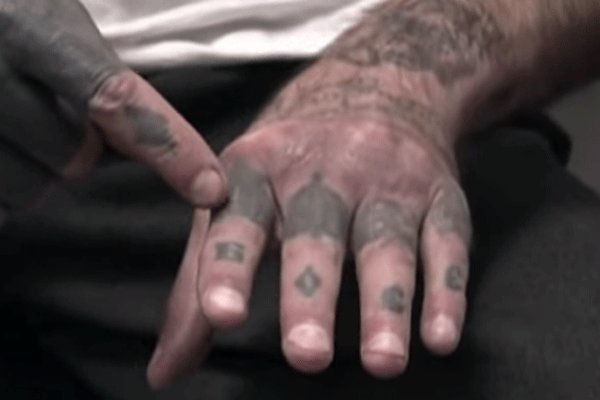 Ring tattoos on the hands are immediately indicative of a convict. Their meanings range from what type of crimes the convict committed, to aggression against authority, to sentences served.
Ring tattoos on the hands are immediately indicative of a convict. Their meanings range from what type of crimes the convict committed, to aggression against authority, to sentences served. -
11.
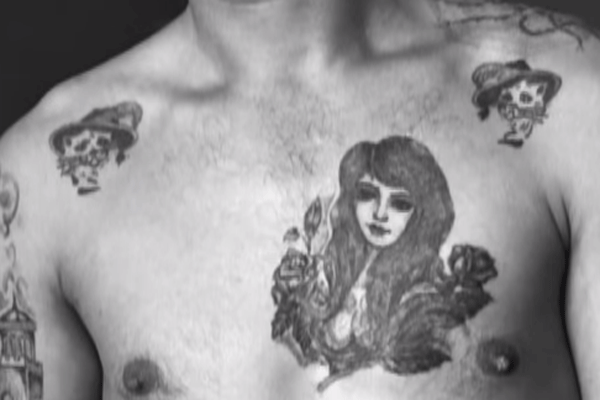 A woman tattooed onto the chest of an inmate is symbolic of that person having been initiated into the Thieves in Law. This type of tattoo may incorporate a rose. Conversely, if that woman is placed on the stomach, then the tattoo is a sign of a prostitute.
A woman tattooed onto the chest of an inmate is symbolic of that person having been initiated into the Thieves in Law. This type of tattoo may incorporate a rose. Conversely, if that woman is placed on the stomach, then the tattoo is a sign of a prostitute. -
12.
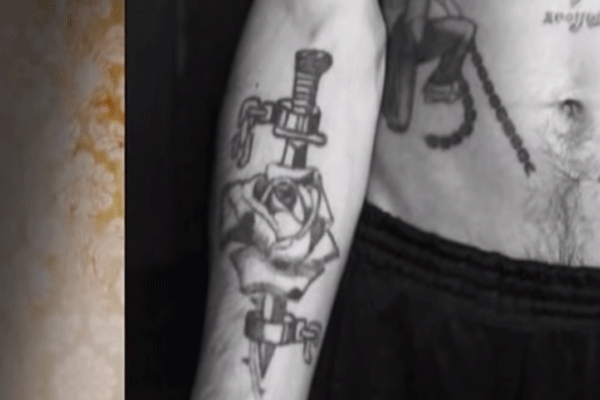 A tulip or a rose ensnared in barbed wire or wrapped around a dagger is symbolic of a convicted imprisoned before the age of 18.
A tulip or a rose ensnared in barbed wire or wrapped around a dagger is symbolic of a convicted imprisoned before the age of 18. -
13.
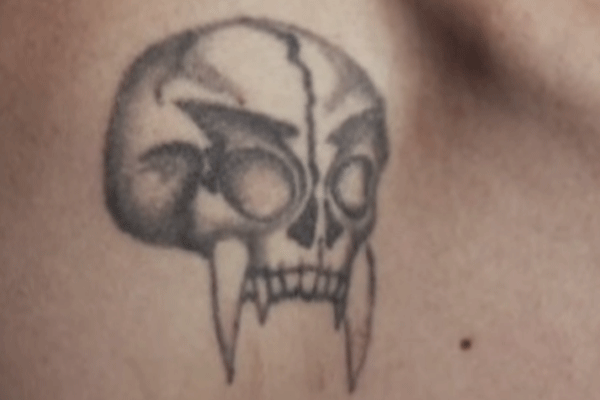 A skull is a symbol of standing up against authority; it means to “bear one’s teeth” against the Soviet power. This was to prove they were not afraid of authority. Inmates earn these tattoos by standing up to figures of authority, such as correctional officers.
A skull is a symbol of standing up against authority; it means to “bear one’s teeth” against the Soviet power. This was to prove they were not afraid of authority. Inmates earn these tattoos by standing up to figures of authority, such as correctional officers.
- NEXT GALLERY
-

- 30 Life Tips You May Find Helpful
Depending on the location on the body, the stars convey a prisoner’s status. When worn on the knees, the stars are a sign of a prisoner who commands respect. The implied meaning is “I will never get on my knees in front of anyone.”
13/13
1/13
Categories:
Wow


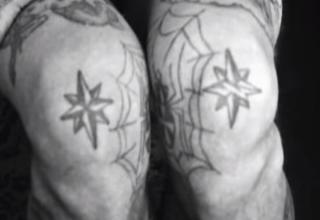
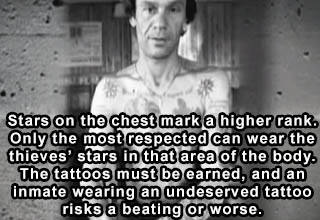

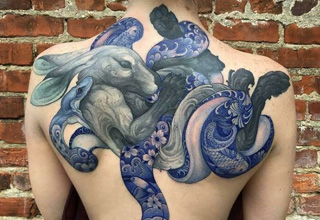




7 Comments